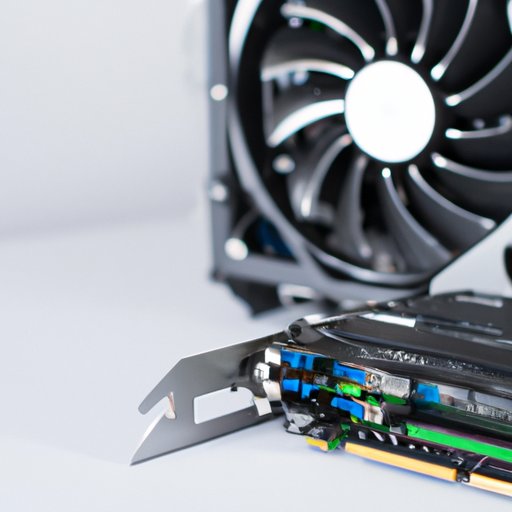
I. Introduction
If you’re a gamer or a graphic designer, you know how important a graphics card is for the smooth running of your computer. A graphics card is a specialized piece of hardware that is responsible for rendering images on your screen. In this article, we will explore why it’s crucial to check for graphics cards, various methods to check if your graphics card is working correctly, how to troubleshoot graphics card issues, and how to compare different tools and software programs available in the market.
II. Why Check for Graphics Cards?
Graphics cards are complex pieces of hardware, and if they’re not functioning correctly, they can cause several issues such as freezing, crashing, and poor image quality. Checking your graphics card should be a regular part of your maintenance routine. A faulty graphics card can cause not just problems with gaming or design work, but it can also slow down your computer and make it difficult to perform other tasks.
III. Methods to Check if Graphics Card is Functioning Correctly
There are various ways to check if your graphics card is functioning correctly. One of the most reliable methods is to use specialized software programs designed for this purpose. You can also use the Device Manager to check if your graphics card is working correctly, or you can use benchmarking tools to test the performance of your graphics card. Each method has its advantages, and it’s a good idea to become familiar with all of them.
IV. Step-by-Step Guide on How to Check for Graphics Cards
Here are some step-by-step instructions on how to check if your graphics card is functioning correctly:
A. Using Direct X Diagnostic Tool
Direct X Diagnostic Tool is a built-in tool in Windows that can diagnose and troubleshoot issues with your graphics card. Here’s how to use it:
- Open the Start menu and type “dxdiag” in the search bar.
- Select “dxdiag.exe” in the search results.
- This will open the Direct X Diagnostic Tool.
- Check the display tab to see if there are any issues with your graphics card.
B. Checking the BIOS
The BIOS is a piece of firmware that connects the hardware of your computer with its operating system. Here’s how to check if your graphics card is recognized in the BIOS:
- Restart your computer and press the key to enter the BIOS (usually F2 or Delete).
- Navigate to the “System Information” or “Hardware Information” section.
- Look for information about your graphics card, such as its make, model, and memory.
C. Inspecting the GPU Physically
One of the most straightforward ways to check if your graphics card is functioning correctly is to inspect it physically. Here’s how to do it:
- Shut down your computer and unplug it from the power source.
- Open the computer case and locate the graphics card.
- Inspect the card for any visible damage such as dents, scratches, or loose components.
V. Troubleshooting Graphics Card Issues
Even if your graphics card appears to be working correctly, it’s essential to diagnose and troubleshoot any potential issues before they become more significant problems.
A. Overview of Common Issues with Graphics Card
Some common issues with graphics cards include:
- Flickering or distorted images
- Overheating
- No image display
- Freezing or crashing
B. Description of Various Tests and Diagnostics to Identify These Issues:
There are several tests and diagnostics you can use to identify graphics card issues:
- Stress test: A stress test checks the stability of your graphics card under heavy load.
- Temperature test: A temperature test checks if your graphics card is overheating.
- Benchmarking test: A benchmarking test checks the performance of your graphics card against industry standards.
VI. Comparing Different Tools and Software Programs
There are several tools and software programs available in the market for checking your graphics card. Here’s how some of the most popular programs compare:
- GPU-Z: A lightweight and straightforward program that provides real-time information about your graphics card.
- MSI Afterburner: A powerful overclocking tool that also includes benchmarking and hardware monitoring features.
- 3DMark: A benchmarking program that tests your graphics card against industry standards and provides meaningful results.
- Furmark: A stress testing program that pushes your graphics card to its limits to check its stability.
It’s essential to consider factors such as ease of use, accuracy, and effectiveness when selecting a program to check your graphics card.
VII. Importance of Regularly Checking for Graphics Card Updates
Keeping your graphics card up to date with the latest drivers is critical for optimal performance. Graphics card updates fix bugs, improve performance, and add new features. Here are some tips for checking for graphics card updates:
- Visit the website of your graphics card manufacturer for the latest updates.
- Use automatic update software to keep your drivers up to date.
- Regularly check for updates and install them promptly.
VIII. Conclusion
In conclusion, checking your graphics card is an essential part of maintaining your computer’s performance. We’ve discussed various methods for checking your graphics card, how to troubleshoot graphic card issues, a comparison of different tools and software programs, and tips for keeping your graphics card up to date. By following these tips and best practices, you can help ensure that your computer is running smoothly and that you’re getting the best possible performance out of your graphics card.





